Are You Packing Your Kids Cavities? 9 Tooth-Approved Lunch Ideas

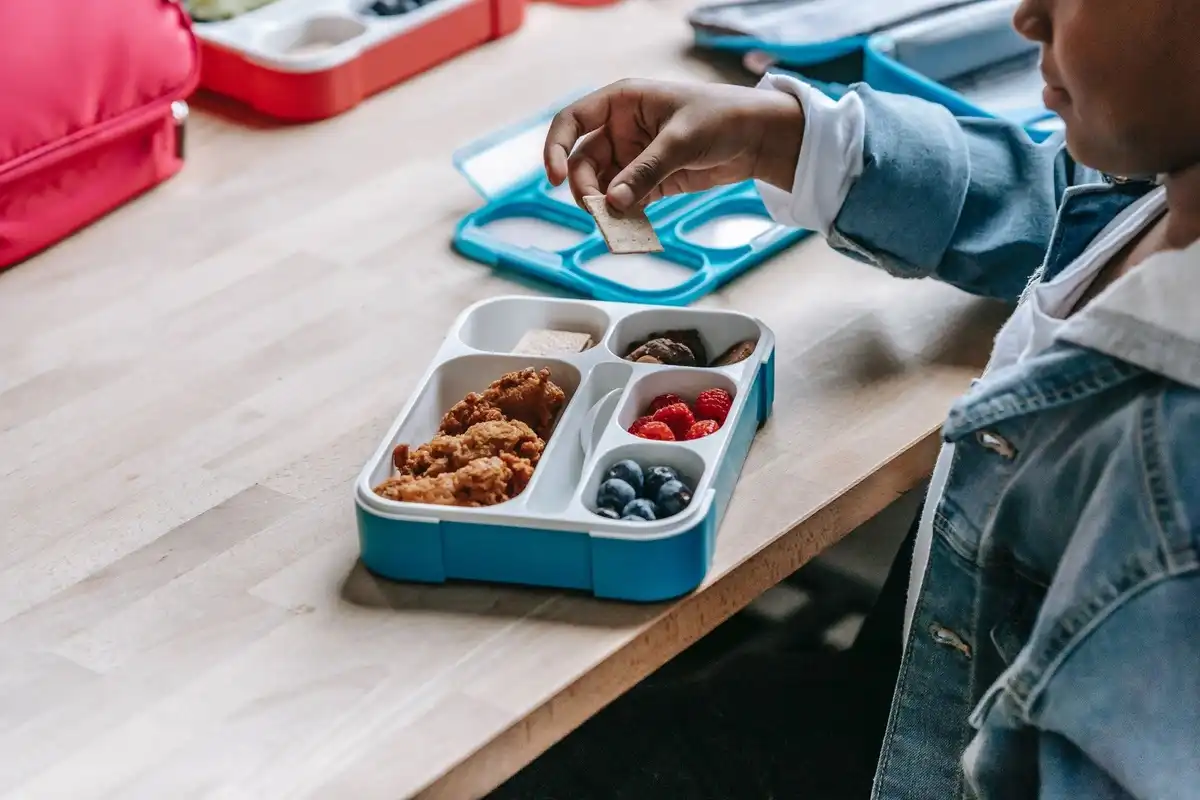
By making a few tweaks here and there, you can take the average school lunch and turn it into healthy kids' lunches that lower your child’s cavity risk.
Are You Damaging Your Kid’s Mouth Without Realizing It?
Unfortunately, a lot of parents and caregivers unknowingly contribute to their child’s risk of tooth decay. It’s not that they’re not trying; it may be that certain foods are marketed as healthy, but they still pose a cavity risk.
With school lunches, our kids tend to eat a lot of the same foods every day of the week. That’s not a bad thing, but balancing them with tooth-approved grab-and-go kids' school lunches can improve the health of teeth and gums. It’s a game of balance.
Lunch Box Culprits
What are the worst offenders against healthy kids' lunches? Typically, anything processed or packaged. If you can’t pick it, grow it, or make it yourself, there will probably be some ingredients in there that aren’t great for teeth. Even bottled water isn’t as “healthy” as the water that comes straight out of your tap, where the fluoride levels are regulated. Chances are that if you can buy it in a bottle or box, it might not rank as “good” or “best” when it comes to food choices.
Here are some common lunch box items, how they might actually be harming your kid’s teeth, and alternatives to consider.
1) Sandwiches
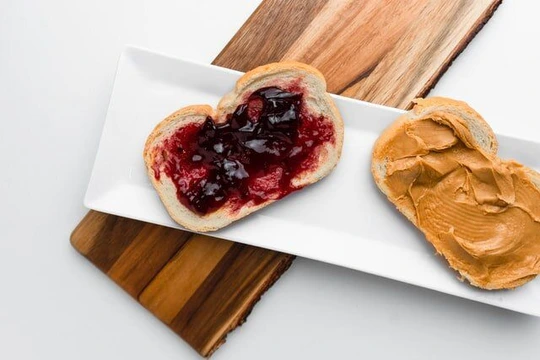
Sandwiches. What is a school lunch without one? Whether you like PB & J or Ham & Cheese is up to you, they all contain one shared ingredient: bread. And bread—especially depending on the kind you use—contains fermentable carbs that fuel cavity-causing dental plaque.
A lot of kids prefer white bread, which is usually even worse for your teeth. And unfortunately, those plaque bugs are going to sit on their teeth for hours until they get back home and brush again.
Alternative
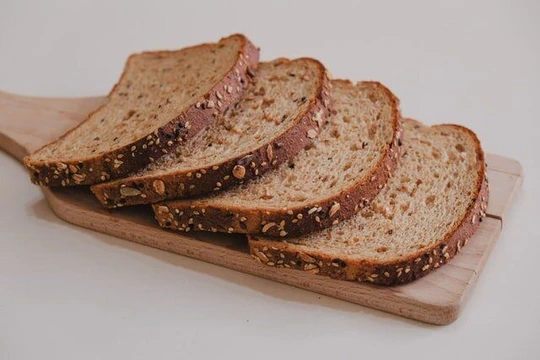
A healthier alternative to white bread in your child’s school lunch is to gradually shift them to a whole grain bread instead. Whole grains promote healthier teeth and gums. They also tend to result in less plaque buildup when you eat them.
Other options are to use pita bread or tortillas to make wraps. Or whole-grain crackers to make “DIY Lunchables” with sharp cheddar cheese and a slice of lean meat.
Experiment with different brands of bread or wraps to find one that your family likes. It may take a little while, but the persistence will pay off.
2) Potato Chips
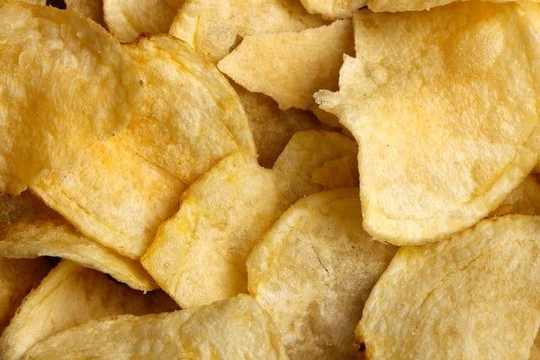
They don’t really seem too bad, but potato chips do the same thing as processed white bread: add to dental plaque and acids on teeth. Plus, a lot of chips also contain added flavors and ingredients that may be detrimental to tooth enamel when you eat them day after day.
Alternative
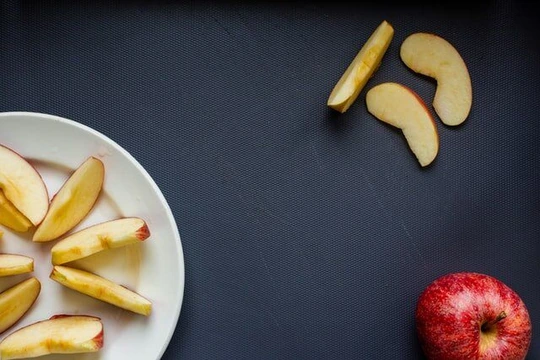
Instead of potato chips, go for nutrient-dense foods that offer a healthy, alternative crunch: fruits and vegetables. Biting into a crispy apple or carrot stick helps wipe away dental plaque while you chew it, stimulates gum tissues, and they’re packed with vitamins and minerals. Apples, celery, cucumbers, sweet pepper slices, berries, carrots, and grapes are just a few healthy alternatives. Other crunchy proteins like nuts are also a great idea! Nuts are also rich in omega-3 fatty acids, which promote brain development and healthy tissues.
While baked chips may be “healthier” thanks to less grease being involved, they’re still loaded with carbs. Enjoying them here or there is fine, but don’t put them in the lunchbox every day.
3) Juices
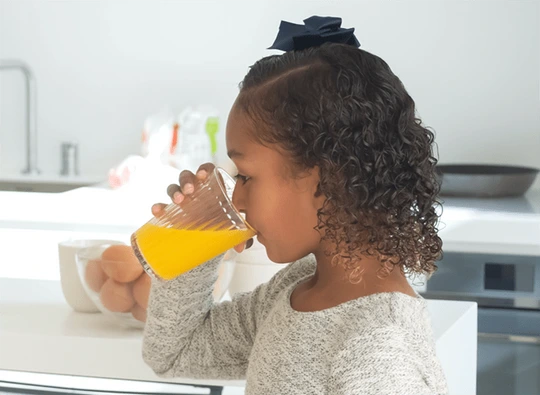
Sadly, kids who drink lots of juice and drink pouches also tend to experience more cavities as they grow up. The same can be said for sports drinks and diet soda, both of which tend to contribute to tooth decay.
Alternative
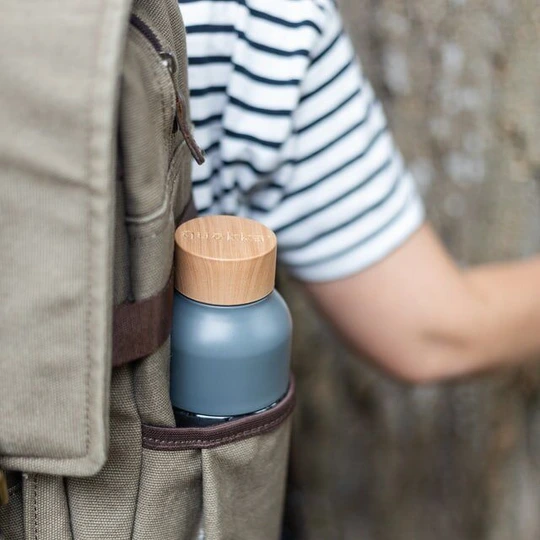
Occasional juice is fine. Watering down juice is sort of ok. But the better option is to just drink tap water. Tap water is fluoridated, which means healthier teeth and bones for added protection against cavities. If your child is hesitant, try to make it more fun by having them pick out a neat water thermos at the store. Or personalize it with their name. Consider treating them to a juice box on Fridays only, so that they don’t have to go without it completely. All in moderation!
4) Sticky Gummy Foods
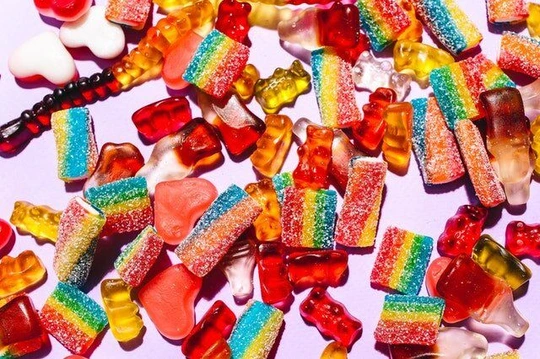
Sticky foods are the worst when it comes to increased cavity rates. Some common examples include fruit snacks/chews, taffy and other sticky candy, dried fruit, caramel, etc.
Any time your child bites into sticky foods, there are particles left in their chewing surfaces for hours afterward. From there, those particles feed the natural bacteria in their mouth to secrete cavity-causing acids. If these foods make up a routine part of “healthy” kids' lunches, parents may be caught off guard during their family’s next trip to the dental office.
Alternative
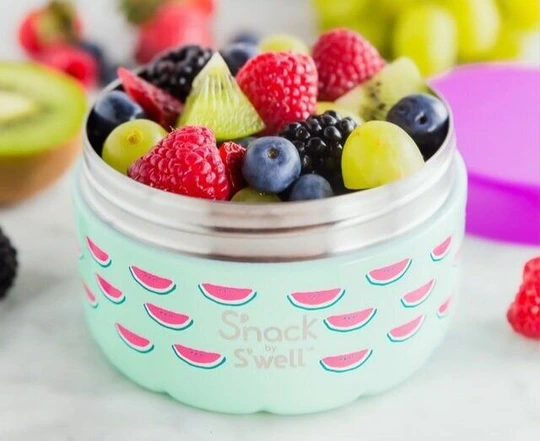
Does your child crave something sweet? For tooth-approved grab-and-go kids' school lunches, consider substituting sticky treats with fresh berries, peaches, etc. Strawberries are a great example and practically a dessert by themselves. The key is to stick to fresh, softer foods that tend to wipe right off the teeth, instead of sticky foods that get stuck for the rest of the day.
Long-Term Effect Of Bad Lunches Daily
Occasionally eating chips, drinking juice, or having candy isn’t going to give you cavities. But when you’re frequently consuming those items on a day-in, day-out basis, they will. It’s the same thing with occasionally enjoying cake or soda. Your waistline isn’t going to change overnight, but if you’re eating or drinking those things a few times a week you’ll see visible evidence of it within a few months. And your kids are going to school for months at a time. If you just scheduled their dental checkups and everything was fine, but you’re sending them to school with a juice box every day, there could be some noticeable cavities by the time they’re due up for their next dental exam.
Good Health And Habits Are Critical At A Young Age
The way you pack your child’s school lunches today will impact their dietary choices for years to come. Those little habits will become second nature. But sometimes they need to be learned and take plenty of practice. Healthy kids’ lunches are just one example; getting outside, exercising, and flossing every day are just a few more. As a parent or caregiver, you help set the tone and make decisions for things that your child cannot understand just yet.
If cavities tend to “run in your family”, tooth approved grab-and-go kids' school lunches can make a huge impact. The change may not come easy, but it’s ok to start small. Just like an exercise routine takes days, weeks, and months to get into the habit of, dietary changes can be similar. Involve your child as you select tooth-healthy food alternatives together, which may make them a bit more willing to go along with the changes.
Make Dental Checkups A Part Of Your Back To School Routine
9 Tooth-Approved Healthy School Lunches
Here 9 great tooth-approved kids’ lunches from kindergarten to your big kids in high school! Check them out and give them a try!
1) Kindergarten lunches
2) Hummus & Spinach Pinwheels
3) Healthy Lunches for Teens
4) Sandwich Free School Lunches
5) Allergy-Friendly kids Lunches
6) Healthy Bento Box kids Lunches
7) Clean & Healthy School Lunches
8) High school Healthy Lunches
9) College Healthy Lunches

Make your inbox smile!
Subscribe





